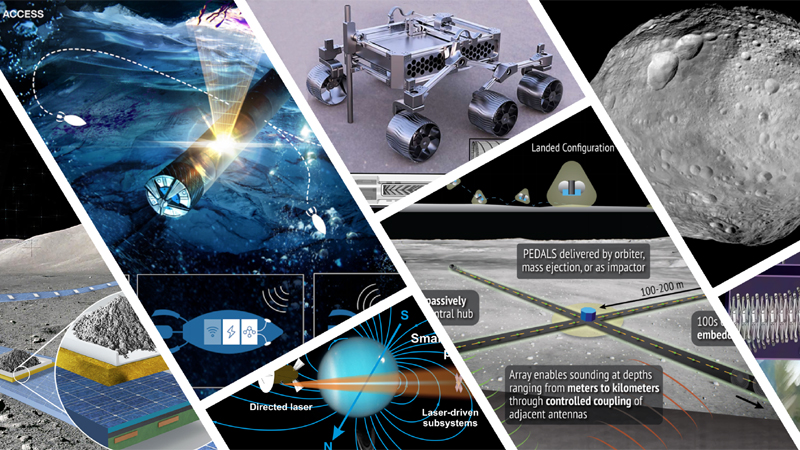Farming space with soil from asteroids “digested” by fungus?
Levitating across the lunar landscape?
How about powering a moon base with sunlight? Or scaffolding enormous spinning space habitats?
Sounds like a science fiction epic about taming the solar system with a high-tech plough through the sweat of an astronaut’s brow. These concepts, however, are a step closer to reality than mere science fiction. Their authors are researchers at various technology corporations, educational institutions, and NASA centers, and their inventive plot devices are not conceived merely to entertain, but to facilitate future expeditions to the moon, Mars and beyond.
More than a dozen researchers have been awarded grants by the NASA Innovative Advanced Concepts program to study the feasibility of their near-sci-fi technology concepts. Working in a gray zone between the real and the imagined, they are kicking ideas from the shadows of the fictional into the light of real potential. And with the $125,000 boost of each NIAC Phase 1 study grant, their speculations on future space technology have been reified just a titch.
Who are the grant recipients, and what kinds of ideas are they coming up with? A few examples.
Portable Magnetic Highway
A robotics engineer at NASA’s Jet Propulsion Laboratory is exploring a concept for a portable magnetic “rail” transportation system for use on the moon.
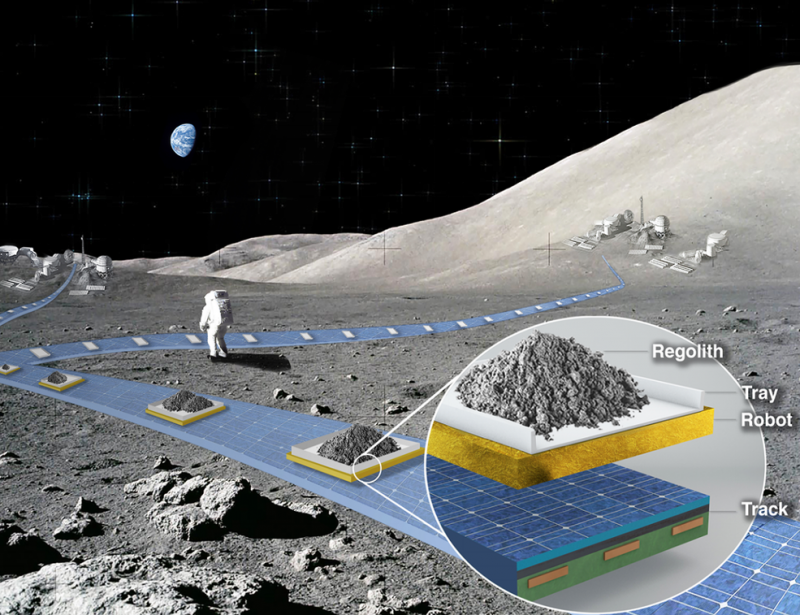
When humans begin to establish long-term lunar habitats, there will be a need to regularly transport a lot of material around the surface. Mining lunar materials for air, water, and fuel components will involve moving the raw “ore” to processing facilities. Excavating rock and soil to build living and working structures will dig up a lot of debris that needs to be carted away.
To do this, the initial concept calls for a flat “track” to be rolled out onto the moon’s surface between locations, creating a sort of instant roadbed without the need for permanent construction. Autonomous transport robots then levitate above the track on a magnetic cushion, carrying their loads across the landscape with no friction or air resistance, and without a need for constant human management.
Swimbots
The same JPL researcher is also exploring a concept for robotic exploration vehicles that can swim in the oceans of other worlds like Jupiter’s moon Europa and Saturn’s moon Titan, which has a methane sea. As we get closer to mounting expeditions to these remote and hazardous liquid environments, we’ll need more than wheels and helicopter blades to drive exploration forward.
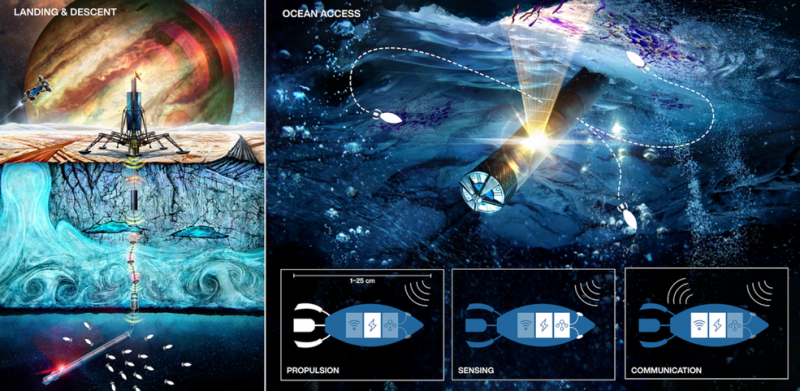
Cultivating Space Soil
A researcher with Trans Astronautica Corporation is eyeing the asteroids as possible source material for creating arable soil, and putting Earth fungus to work to make it happen. The idea is for the fungus to break down or “digest” the sterile asteroid material into soil for growing plants.
Along with aspirations for humans to live on the moon and make the arduous voyage to Mars comes the need to feed them. Such expeditions will no doubt bring along food staples and water, but carrying cargo into space — even the short hop from Earth to the International Space Station — is costly, especially with a continual need to resupply. And sending supplies to a moon base, or a long-range Mars mission, is an even greater expense and challenge.
Any food that can be produced or grown on the ship or station where it is to be consumed will grant a mission greater autonomy and food security, and eventually may allow space-faring humans to become self-sufficient. Even today, plants are experimentally grown and harvested onboard the International Space Station, laying the groundwork for future space farms much farther from home.
The idea of mining asteroids for precious metals, either by traveling to one or relocating it to an orbit around Earth or the moon, has been envisioned for some time. But the thought of tapping the worthless rocky components of asteroids to produce a commodity far more valuable than gold to astronauts who need to eat is a stroke of brilliance.
Since there are plenty of asteroids flying around the solar system, the potential to produce usable soil is practically unlimited, and the practice may one day feed large-scale space habitations.
Prefabbed Space Homes
A Carnegie Mellon University assistant professor is conceiving a lightweight collapsible apparatus as a deployable “building block” for constructing enormous, kilometer-scaled space structures.
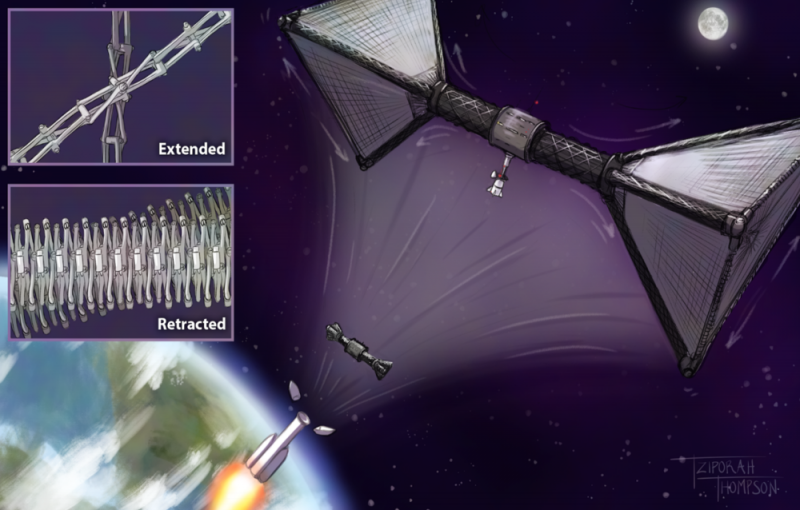
This idea accepts an ambitious challenge set by science fiction writers over the decades: to engineer an artificial space habitat, or “space ark,” of a scale grand enough to accommodate a population of humans and a sustainable, even self-sufficient ecosystem.
Supercharged Solar Power
A researcher at NASA’s Langley Research Center is shining light on a concept to generate and distribute electrical power for use on the moon, using telescope optics to capture, redirect and focus sunlight.
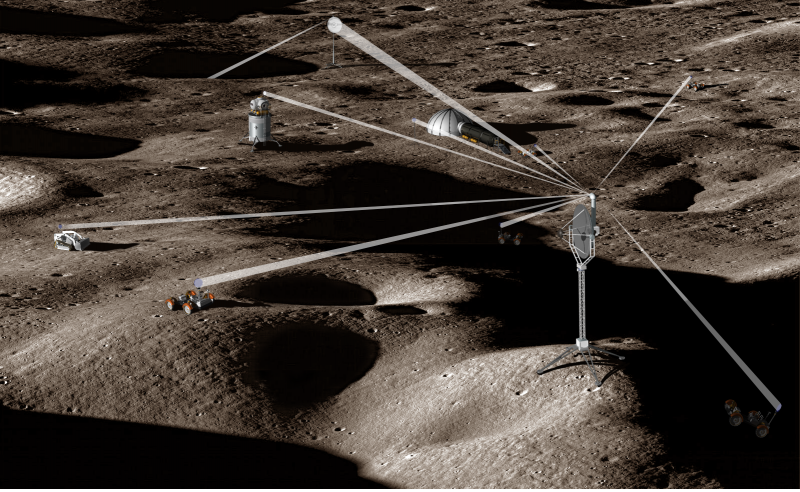
Though concentrated solar energy systems are nothing new, engineering a system for the moon presents some unearthly technical challenges — for one, designing a system small and light enough to be transported from Earth to the lunar surface while still maximizing energy production to squeeze out as much power from the sun’s rays as possible.
Back to Sci-Fi
Science fiction may inspire the invention of new technologies and scientific endeavors, but the reverse is also true. Real achievements in space exploration and the tech that enables it inspire us to wonder more deeply about where the adventure can lead, which can inspire further innovation.
We may not see giant space habitats and crops harvested from asteroid dirt for some time, but thinking about how to do these things needs to start now. As humans gradually move farther from Earth and dwell in space for longer stretches of time, visions of this kind may inevitably become the reality of future generations.
